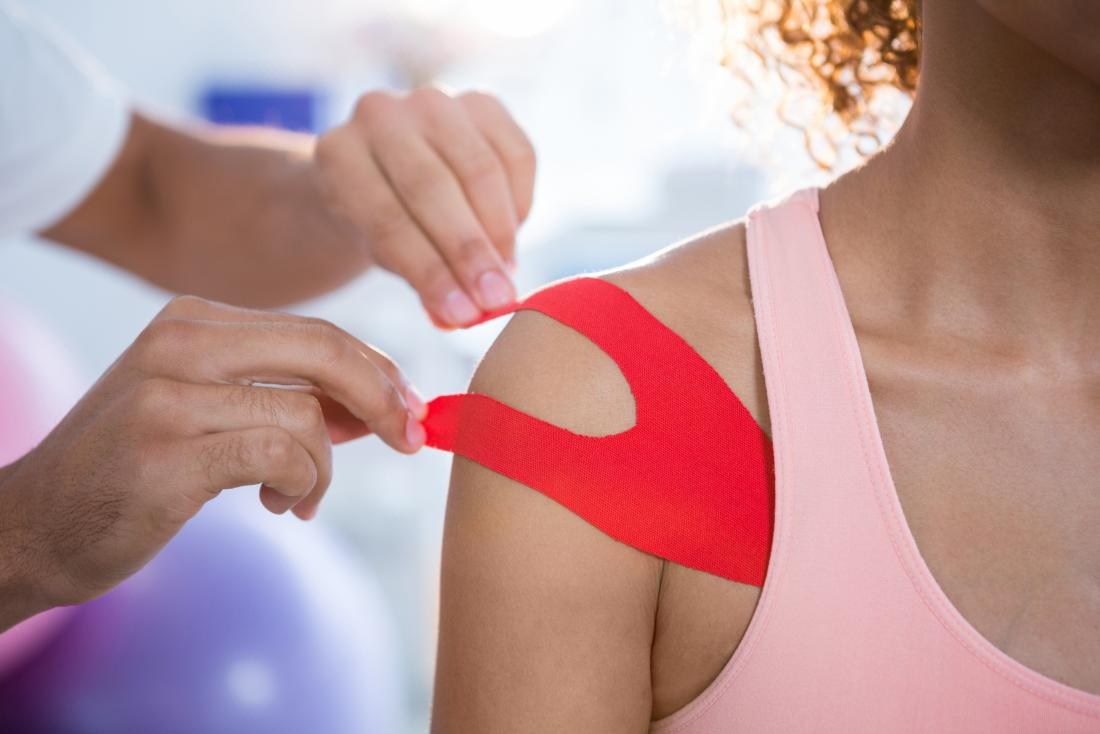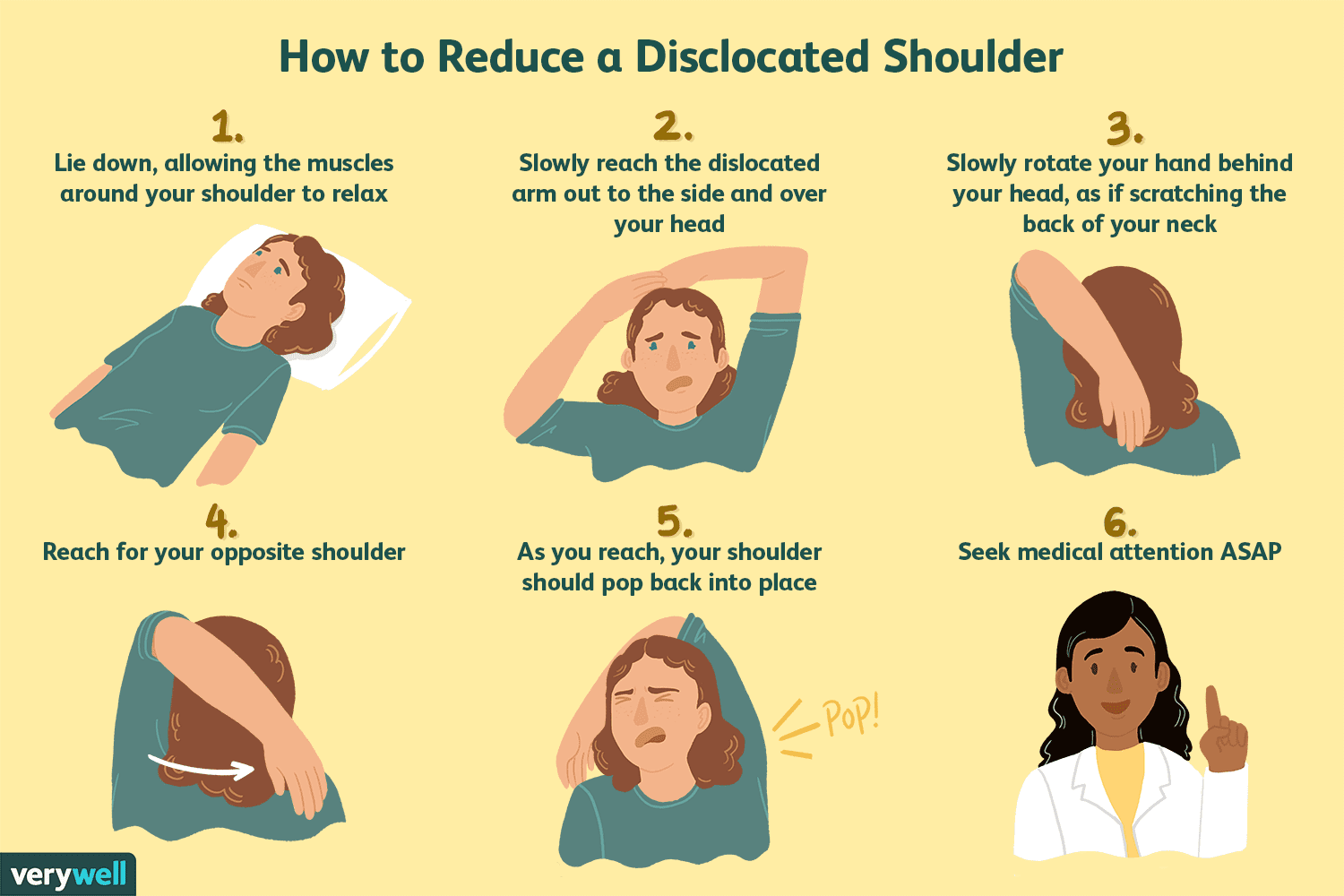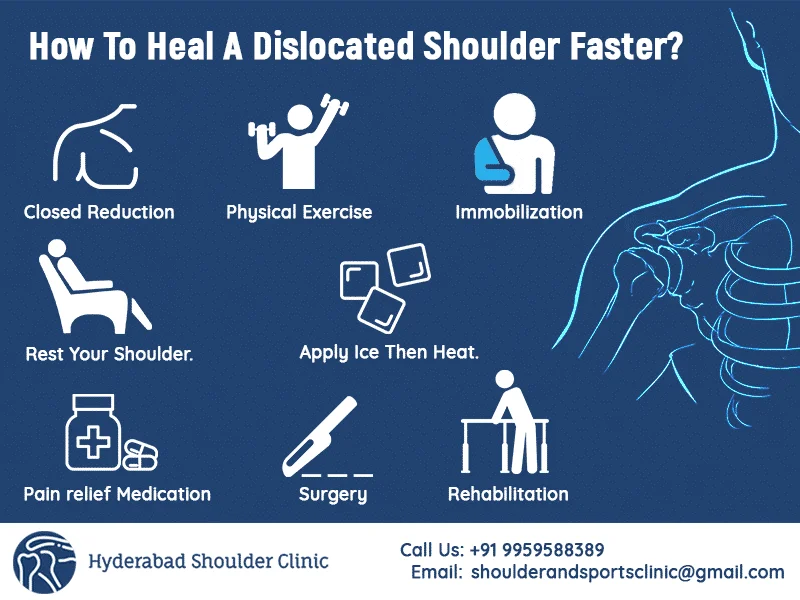A shoulder dislocation occurs when the head of the humerus (the upper arm bone) comes out of the socket of the shoulder blade (the glenoid). This injury can happen due to trauma, such as a fall, an accident, or during sports activities, particularly those that involve sudden movements of the arm.
There are two main types of shoulder dislocations:
- Anterior dislocation: This is the most common type, where the humerus is displaced forward, towards the chest. It often happens when the arm is raised and rotated outward.
- Posterior dislocation: This is less common and occurs when the humerus is pushed backwards. It can result from electrical injuries or seizures.
Symptoms of a shoulder dislocation
If you observe any of the following symptoms please consult us at Hyderabad Shoulder Clinic.
- Intense pain and swelling
- A visibly deformed shoulder
- Inability to move the arm or shoulder
- Numbness or tingling in the arm or hand
Shoulder dislocation treatments
Treatment typically involves repositioning the bone back into the socket, a procedure known as reduction. This can be done either manually or surgically, depending on the severity of the dislocation and any associated injuries (like fractures). Following reduction, rest, immobilization, and rehabilitation exercises are important for recovery to restore strength and range of motion.
Treatment for a shoulder dislocation typically involves several steps aimed at relieving pain, restoring function, and preventing future dislocations. The approach can vary depending on the severity of the dislocation and whether there are associated injuries. Here are some common treatment methods:
- Immediate Care:
- Do not attempt to relocate the shoulder yourself. This should only be done by a healthcare professional.
- The affected arm may be supported in a sling to prevent movement and reduce pain.

- Reduction:

- This is the process of repositioning the humerus back into the shoulder socket. A doctor will use specific techniques, often involving manual manipulation.
- Reduction can sometimes be performed under local anaesthesia or sedation to minimize discomfort.
- After the shoulder has been successfully relocated, the doctor may recommend a period of immobilization in a sling or brace for a few weeks to allow healing.
- Ice packs can be applied to reduce swelling and pain.
- Physical Therapy: Once the initial pain and swelling decrease, physical therapy is often recommended to restore range of motion and strengthen the shoulder muscles. This might include specific exercises and stretches tailored to the individual’s recovery needs.
- Pain Management: Over-the-counter pain relievers such as ibuprofen or acetaminophen may be suggested to manage pain and inflammation.
- Surgical Treatment: If there are recurrent dislocations or significant damage to the shoulder structures (like torn ligaments or labrum), surgery may be necessary. Surgical options can include repairing the damaged tissue, reconstructing the shoulder socket, or tightening the surrounding ligaments.
How long should I rest my shoulder after dislocation?

The duration of rest required for your shoulder following a dislocation can vary significantly based on multiple factors, including the severity of the injury, the presence of additional damage, and your personal health circumstances. Here’s a more detailed breakdown of the typical recovery timeline and associated recommendations:
- Initial Rest Period: After your shoulder has been dislocated and successfully relocated (reduction), it’s crucial to allow adequate time for healing. Generally, you should plan to rest your shoulder for approximately 1 to 3 weeks. During this acute phase, keeping the shoulder immobilized is essential. A sling or shoulder immobilizer may be used to minimize movement, providing support and relieving pressure on the joint.
- Gradual Activity Resumption: Once the initial rest phase has elapsed, most healthcare providers advise starting a gentle range of motion exercises. Typically, this can occur around 2 to 4 weeks post dislocation, depending on how well your shoulder is healing. These exercises focus on gently moving the shoulder through its natural range to prevent stiffness. These activities must be performed cautiously, ideally under the supervision of a physical therapist or healthcare professional to ensure correct technique and prevent further injury.
- Engaging in Physical Therapy: After the initial immobilization, many individuals benefit from a structured physical therapy program. Your doctor may refer you for this around the 4 to 6-week mark, where a therapist will design a regimen of strengthening and stabilization exercises specific to your needs. This phase of recovery can last several weeks to months, depending on your progress and how well you respond to rehabilitation efforts. The goal is to restore full function and strength to the shoulder while also working on proprioception (the body’s ability to sense movement and position).
- Time to Full Recovery: Complete recovery from a shoulder dislocation can range from a few weeks to several months. Factors influencing this timeline include the extent of injury to surrounding ligaments or tissues, the effectiveness of rehabilitation, and how well you adhere to your recovery plan. It’s important to remember that rushing back into strenuous activities or sports before your shoulder is fully healed can increase the risk of redislocation or other injuries.
A word from Dr Chandra Sekhar B, from Hyderabad Shoulder Clinic about How long should you rest your shoulder after dislocation
Throughout the recovery process, be attentive to your body’s signals. If you encounter increased pain, swelling, or any unusual symptoms, consult us at Hyderabad Shoulder Clinic for further evaluation and tailored advice. Following a comprehensive recovery plan will help ensure the best possible outcome for your shoulder health. It’s essential to follow the advice of Dr Chandra Sekhar B, from Hyderabad Shoulder Clinic, throughout the treatment process to ensure safe and effective recovery. Seek medical attention from Hyderabad Shoulder Clinic promptly for proper evaluation and treatment. If you have questions or would like additional support, don’t hesitate to reach out to us at https://hyderabadshoulderclinic.com/ or contact us at +91 9959588389 or shoulderandsportsclinic@gmail.com.





